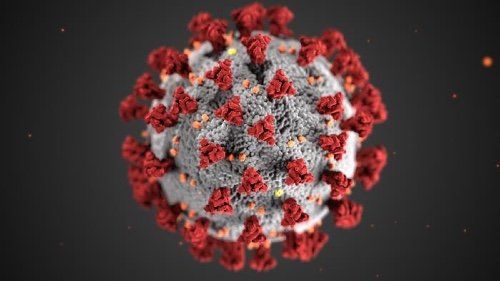Lessons from Singapore about COVID-19 and Radiology
One hospital’s experience in Singapore with SARS could help guide U.S. hospitals through COVID-19

This article first appeared on ContagionLive.
Every day, SARS-CoV-2, the virus that causes COVID-19, spreads further throughout the globe, and its reach is growing rapidly in the United States. As hospitals ramp up and struggle to meet patient needs, a new study highlights why it’s important for these facilities to take every precaution possible.
In the American Journal of Roentgenology, Lionel Tim Ee-Cheng, MBBS, MMED, with Singapore General Hospital, shared his facility’s experience nearly two decades ago during the 2003 outbreak of severe acute respiratory syndrome (SARS). What they learned indicates radiology departments will play a critical role in how hospitals both treat and prevent further novel coronavirus spread.
The SARS outbreak started in China in 2002 and eventually infected some 8,000 people. It arrived in Singapore in February 2003, and would go on to infect 238 Singaporeans, killing 33 of them. Cheng reports that 40.8 percent of cases and five deaths involved health care workers; three cases were radiographers.
Cheng writes that while radiology might not typically be viewed as a front-line clinical department when it comes to infectious disease outbreaks, his department was called on to play a critical role in the 2003 SARS outbreak.
“Timely radiologic results were needed to identify cases,” he writes. “Portable imaging was extensively used, directly exposing radiology staff to the pathogen.”
Radiology departments are also highly trafficked, he noted, with inpatient and outpatient, febrile and non-febrile patients crossing paths with visitors and health care workers from other departments.
“Hence, any breach in infection prevention and control mechanisms in the radiology department has far-reaching consequences,” he writes.
Those concerns resulted in a number of changes back in 2003, Cheng said, and the new coronavirus outbreak has become a moment to re-institute and adjust those measures.
Among the changes are alterations in workflow to help patients and staff avoid unnecessary contact, re-allocations of resources in order to facilitate mobile imaging requests, and enhanced prevention and control measures.
Cheng writes that one important facet of keeping staffers safe is making sure everyone is up to date on the latest scientific and medical knowledge related to the evolving outbreak. That information dissemination should be done quickly, and it should be done in line with an evaluation of infection control and prevention measures to ensure everyone knows how to use their personal protective equipment (PPE). Singapore General also instituted a shift system that kept specific people in one department working on the same team as specific people in other departments.
“This allowed radiology services to continue uninterrupted in the event any group had to be quarantined,” he wrote. “The extent of any quarantine then depended on how closely group members interacted and whether they were wearing PPE.”
The hospital similarly adjusted its workspaces in order to decentralize workers and equipment. Certain scanners were dedicated only to high-risk cases and patients in isolation, and access to the radiology department was strictly limited.
Finally, Cheng said the hospital had to amend certain procedures and workflow in order to prioritize information and results as the outbreak spread and the health care community’s knowledge of it evolved.
While Cheng said the radiology department’s primary role in an outbreak is identifying infected patients through imaging, workers in the department must also think about their role as part of a broader response ecosystem.
“[R]adiology departments must also be nimble in implementing operational changes to ensure continued radiology services, protect patients and staff, and maintain staff morale during a sustained outbreak,” he said. “People are the most valuable resource during a crisis, and it takes the concerted effort of every staff member to meet the challenges of an outbreak.”
The Reading Room Podcast: Current Perspectives on the Updated Appropriate Use Criteria for Brain PET
March 18th 2025In a new podcast, Satoshi Minoshima, M.D., Ph.D., and James Williams, Ph.D., share their insights on the recently updated appropriate use criteria for amyloid PET and tau PET in patients with mild cognitive impairment.
Meta-Analysis Shows Merits of AI with CTA Detection of Coronary Artery Stenosis and Calcified Plaque
April 16th 2025Artificial intelligence demonstrated higher AUC, sensitivity, and specificity than radiologists for detecting coronary artery stenosis > 50 percent on computed tomography angiography (CTA), according to a new 17-study meta-analysis.